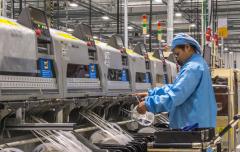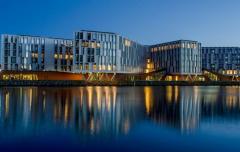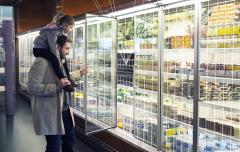Partner Spotlight: District Energy in Cities Initiative
The District Energy in Cities Initiative is a multi-stakeholder partnership co-convened by UN Environment, Danfoss and many other partners. As one of six accelerators of the Sustainable Energy for All (SEforALL) Energy Efficiency Accelerator Platform, the Initiative aims to double the rate of energy efficiency improvements for heating and cooling in buildings by 2030, helping countries meet their climate and sustainable development targets.
SEforALL talked to Lily Riahi, Advisor on Sustainable Cities and Head of the District Energy in Cities Initiative at UN Environment, and Atli Benonysson, Danfoss Vice President, Application & Technology about the Initiative’s mission and projects as well as its contribution to the UN Climate Action Summit.
What are district energy systems, and how do they contribute to SDG7 and the Paris Agreement on Climate Change?
Simply put, district energy systems are networks of underground pipes that distribute hot or cold water to multiple buildings in a district, neighborhood or city.
Modern district energy infrastructure can make a considerable contribution to cities' efforts to mitigate climate change by vastly improving energy efficiency and increasing the share of renewables, thereby reducing CO2 emissions. The great thing about district heating and cooling systems is that they can tap into any locally available energy source, including renewable and low-carbon energy sources that are not available on the building level, for example, waste heat from industry and commercial buildings.
Such a connected, multi-source system enables cities to reduce their primary energy consumption for heating and cooling typically up to 30-50 percent and improves air quality and thereby citizens' health. These are critical measures for cities and countries that aim to achieve 100 percent renewable energy or carbon neutrality targets.
What was the Initiative's contribution to UN Climate Action Summit this week?
Heating and cooling account for 55 percent of the global energy consumption in buildings and district energy can reduce primary energy consumption by 30-50 percent thanks to combined heat and power.
At the UN Climate Action Summit, Danfoss was working with the Cool Coalition and the Three Percent Club to increase the uptake of renewables by the use of energy-efficient solutions such as district energy. The District Energy in Cities Initiative has proven that it can be done all over the world. Moreover, we still have an untapped potential if we start using waste heat and scale-up district energy networks.
The Initiative conducted pilot projects in 36 cities and 14 countries. How does the Initiative fund these pilots?
The Initiative is coordinated by UN Environment with financial support from the Danish International Development Agency (DANIDA), the Global Environment Facility, the Italian Ministry of Environment and Protection of Land and Sea, and the Kigali Cooling Efficiency Programme. On top of that, the Initiative has an extensive network of diverse partners who have contributed nearly 28 million dollars through in-kind and direct investment. Danfoss is one of these partners, and we're proud that our funding has helped expand the team of deployable district energy experts to work with cities and countries on concrete projects.
After the pilots, what are common challenges for the implementation of district energy systems?
In the pilots, we work with local and national authorities from all corners of the globe to help build know-how and implement enabling policies that will accelerate investment in low-carbon and climate-resilient district energy systems.
Of course, the barriers for the uptake of district energy systems depend on the specific context, but they often begin with a lack of awareness about benefits and savings – something this Initiative helps tackle head-on. High upfront costs and the scalability of projects due to a lack of integrated infrastructure and land-use planning are also often a challenge.
Finally, as district energy systems increasingly become multi-source, we also need to address barriers around the access of third parties that produce renewable energy or waste heat and cold. The easier it is for them to feed it into district networks, the more potential we can tap so that we maximize the positive impact.
Which cities have successfully changed their policies based on the Initiative's advice? Any examples where success at the city level had a positive impact at the national level?
Chile is an excellent example of how the work is coordinated on both local and national levels. In 2019, the accelerator helped to launch the Chilean District Energy Municipality Network to facilitate the exchange of information among the 13 cities that have so far expressed their interest.
All cities are receiving technical support for the identification and development of pilot projects. Ten rapid assessments have been finalized, showing the potential of district heating in seven cities and for district cooling in three. Now, deep assessments and city-wide district energy master plans are being developed for three cities. At the same time, the Chilean Ministry of Energy has set up a national district energy delivery unit to support cities and bring projects to market using our methodology/tools. The government is requesting support to restructure its building efficiency policy framework to incentivize connection to district energy.
It's still early days in Chile, but we're excited to follow the projects as they move along.
How are you collaborating with other partners of the SEforALL Energy Efficiency Accelerator Platform?
In Belgrade, Serbia, improving energy efficiency in the city's buildings and its district heating network were both priorities, as is switching heat sources from imported gas to renewables and waste heat. Belgrade has one of the largest district heating systems in Europe, which supplies heat to approximately half of the city's population, so it's a big undertaking.
Working simultaneously with accelerator initiatives on energy efficiency in buildings and district energy, Belgrade developed a strategy to integrate building efficiency and district energy.
What are your plans over the next three years for scaling-up your Initiative?
Last year at the Partnering for Green Growth and the Global Goals 2030 (P4G) Summit in Copenhagen, the District Energy in Cities Initiative, was selected as one of the top three globally impactful public-private partnerships on energy, alongside the African Development Bank and World Bank/IFC.
That was a huge honor and underlines that we've managed to create a strong foundation for contributing to SEforALL's goal of doubling the global rate of improvement of energy efficiency by 2030 through district energy. Now we want to accelerate efforts further and get even more partners - city networks, governments, industry, financiers, universities and operators – on board. At Danfoss, we have committed support to the Initiative for another three years, and we are looking forward to taking the platform to new levels.
Find out more: http://www.districtenergyinitiative.org
Photo credit: By Felipe Restrepo Acosta, Wikimedia




